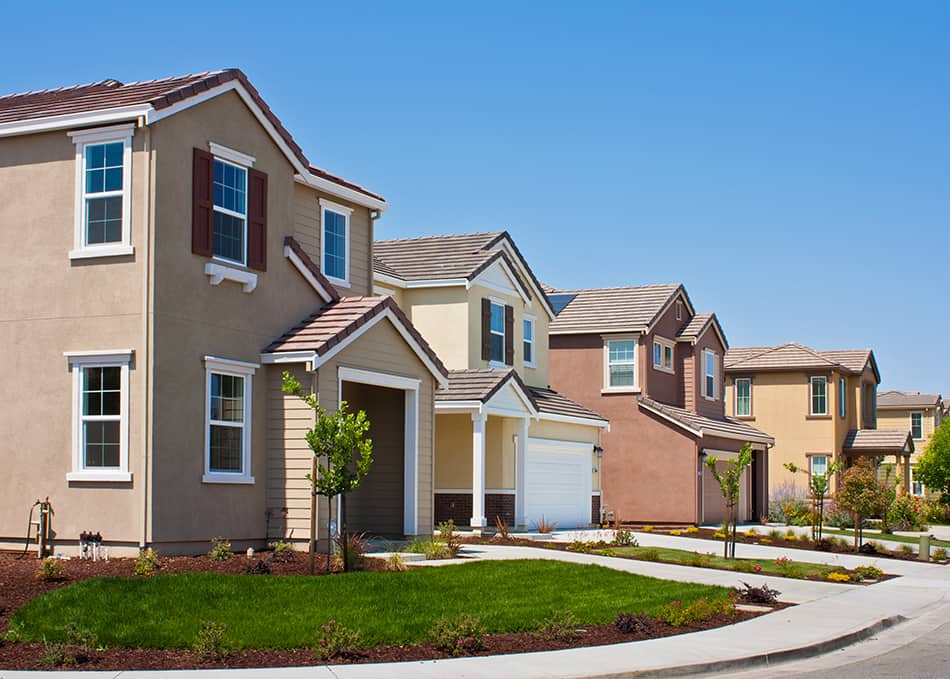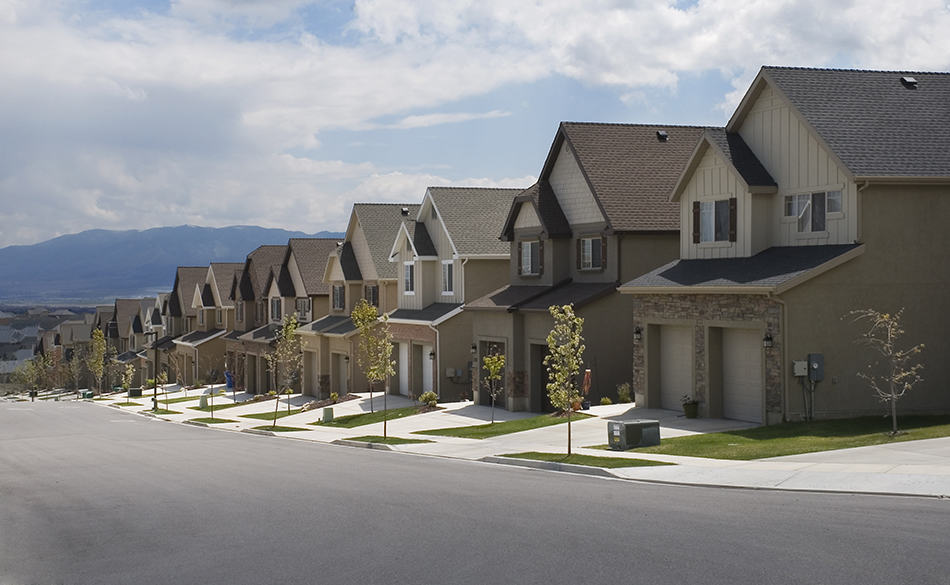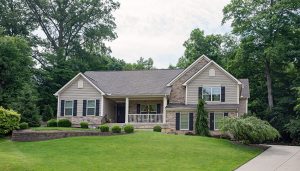Buying a home is always a stressful event, whether you’re experienced in purchasing properties or you’re a first-time buyer. There are many decisions to make, including the type of home you choose to buy. If you’re thinking of purchasing a tract home, you might be keen to find out more about this type of property and learn about all of the advantages and disadvantages.
There are numerous things to consider when purchasing a tract home to make sure it is the right choice for your family and your situation. To make the process easier, find out everything you need to know about tract homes here.
What is Tract Housing?
Tract housing refers to a development of residential homes which all look the same, both externally and internally. They will have the same floor plan, the same fixtures and fittings, and the same style. They are known as tract homes because they are built on a tract of land which has been purchased and then subdivided into smaller plots for the purpose of constructing properties and selling them.
Tract housing is attractive to many buyers because it is typically inexpensive and allows people to get onto the property ladder for less money than they would pay for a custom home, though it won’t appeal to people who dislike cookie-cutter developments.
Pros and Cons of Tract Homes
There are pros and cons to all various types of homes, but a smart buyer will be aware of all the advantages and disadvantages in order to make an informed decision about which property will work best for them. To properly assess the pros and cons, you’ll need to think about what your priorities are and judge the pros and cons accordingly.
Pros:
Low Cost
The biggest advantage of tract homes for most people is that they have a low cost. This is achieved by the way in which tract homes are planned, designed, and built. A tract of land will be purchased by a developer and subdivided into individual plots of the same size. On each plot, an identical home will be built, with no option for the buyers to request upgrades or customization.
By doing this, the developer can score huge discounts by buying materials in bulk. For example, they will buy all drywall from one supplier and all lumber from one supplier.
The savings achieved by buying construction materials in bulk is then passed onto the home buyers with low property purchase prices. The labor cost of building the homes is also reduced because each home is the same, and therefore a team of builders can quickly work through a development without having to think about different measurements or custom details.
The homes are built almost like a production line, which speeds up the build process and means the developers don’t have to pay the builders for as many hours in labor as other types of homes.
Quick Build
Tract developments go up quickly, which will be attractive to some people who are eager to move home, for instance, when starting a new job or the impending arrival of a new baby. After signing for your new tract home, you could be moving into the property in as little as five or six months, whereas a custom home will take on average between nine months and a year to be constructed.
Tract homes are built so quickly for two reasons. First of all, as all tract homes in a development require exactly the same components, most parts of the home will be made in a factory.
This means that builders won’t have to cut lumber or cabinets to size on-site, which drastically cuts down the amount of time it takes to construct the property. Rather than actually building the homes, tradesmen working on tract homes provide more of an assembly service, fitting the pre-sized pieces together in a particular order.
The second reason why tract homes are completed so quickly is that one team of builders will work on all of the tract homes in a development, which has identical construction plans.
This means that after a few houses, the builders will be well experienced in constructing that particular home and can speed through the rest of the houses without really having to think about it. This significantly cuts down build time, as no decisions will need to be made, and no unexpected problems will be encountered.
Equality
If you feel uncomfortable with different houses on the same street being in competition with each other, or you prefer not to get involved in keeping up appearances with the neighbors, then the equality that tract housing provides might appeal to you. Every home on a tract housing development will look identical, so you will never feel inadequate compared to other properties on the street.
Your home also won’t stand out as being especially desirable and will blend in amongst all the other houses, which can prevent it from becoming the target of a break-in.
Desirable Locations
Tract homes are usually built in centrally located neighborhoods, which means they have the advantage of local amenities such as schools, stores, public transport, and jobs nearby. They tend to be located in desirable areas which usually have high price tags, making them the only option for people who want a low-cost home in a sought-after location.
The attractive location of most tract home developments enables people with a low budget to move closer to work, to a good school district, or to an area with improved amenities or lower crime rates. This makes them an excellent option for starter homes.
Family Neighborhoods
The low cost of tract homes teamed with their desirable location makes them very popular amongst young professionals and young families. This is great if you want your kids to grow up alongside other children and have playmates close by. It also makes it more likely that you’ll have things in common with your neighbors, which can make for a more peaceful co-existence.
Model Homes
A tract development will usually have a model home on site which has been fully kitted out like a proper family home. It will be identical to the tract homes you can buy off-plan and gives you a much better idea of what your eventual tract home will look like compared to sketches and 3D visualizations.
When buying a custom-designed property, it can be a struggle to really visualize what the finished build will look like or get a feel for the flow of the layout or room sizes. This isn’t a problem with a tract home because you can walk through the model home and know exactly what you’re signing up for.
Cons:
Low Quality
The main drawback of tract housing is the low quality of the materials and the workmanship. As the housing components are purchased in bulk by the developer with the priority being on low cost, this means that the cheapest parts are usually selected, with basic finishes.
The low quality of the materials used to build tract homes means that they don’t usually last well, and buyers will typically encounter snags and problems with the house within just a few years. Tract homes are built for efficiency and budget and are not concerned with longevity.
Tract home developments are also usually constructed by builders who have been outsourced and are not usually local. This means that, unlike local building companies or small family building businesses, they don’t have a reputation to uphold and therefore can be careless or take shortcuts on the construction with no risk of losing future contracts.
Tract homes are designed to be built quickly, and pressure will be put on builders to ensure their jobs are completed in the agreed timescale so that costs do not run any higher. Completing building work so quickly will typically result in mistakes and shoddy workmanship.
This poor quality of materials and construction means that tract homes are best as a short-term solution for buyers who want to get their foot on the property ladder to build equity before moving on.
Community Rules
Tract home developments will often have rules in place which you are contractually obliged to adhere to. Possible rules include a ban on making changes or additions to the exterior of the property, as the developers like to maintain a cookie-cutter look. This could be a problem if you want to personalize the look of your home.
It can also prevent you from making improvements and updates to the exterior of the property, which vastly restricts your ability to add value or curb appeal to your home.
Identical Homes
For some people, a development of identical homes will be a benefit, but for many people, it is a disadvantage. If you value uniqueness and rebel against conformity, then the uniform look of the homes in a tract development might make you feel uneasy.
It can also make life feel very bland and boring to have nothing interesting to look at or any features on neighbors’ houses that stand out. The monotony or identical homes can make some people feel suffocated.
Limited Resale Value
As tract homes are all identical, the resale value of your home when you wish to move on will be limited by the value of all the other properties on the development. There is very little you can do to make your tract home stand out, and property agents will recommend listing your tract home at the same price as any others for sale on the same development in order to remain competitive and stand a chance of selling the home.
A development full of identical homes also means that you’ll likely have competition when selling your home because if several homes on the same development are for sale, then prospective buyers will also be looking at those and are likely to choose whichever home is listed at the lowest price.
It’s easy to get into a price war with competing properties, especially if you’re in a hurry to sell your property, but this can cut into your equity and affect how much of a down payment you have for the next home you want to buy.
Lack of Owner Diversity
Tract homes are targeted at young professionals, young families, and landlords. This is because they are priced as starter homes and therefore attract first-time buyers with less expendable income. This can result in a development with minimal diversity in terms of age, as tract homes aren’t designed to appeal to older generations.
Many tract homes will be snapped up by landlords as a cheap way of adding properties to their portfolio, which can be rented out to make a profit. The fear among homeowners is that tenants don’t tend to take as much care of their homes, and they might frequently move, which can be unsettling if you have a constant stream of new neighbors.
Small Plots
As tract homes are most often built on developments in central locations, they have smaller plots than homes you might find in more rural locations, where land doesn’t come at such a premium.
The whole point of tract homes from a developer’s perspective is to build as many homes as possible on a tract of land in order to maximize profit because more houses to sell means more money. This means that the plots designated for tract homes are not very generous, which can be a disappointment if a large garden is a priority for you.
How Long Does it take to Build a Tract Home?
Tract homes are usually completed within five or six months, which is extremely quick compared to other types of homes. For large-scale developments of residential properties, tract homes are built faster than any other type of house. The speed at which tract homes are built is down to multiple factors, which all boil down to the houses being identical.
A large development of identical homes allows developers to build long-term relationships and negotiate bulk order discounts with suppliers. Teams of builders are often moved from one development to another, constructing the exact same property and using their experience and knowledge of that property’s blueprint to ensure smooth and speedy builds.
Buyers of tract homes do not get to have any input on the finishes of their property, with no customization typically allowed. This means that there is no delay while buyers deliberate over choices and no time spent waiting for different finishes to be ordered in.
One of the earliest types of tract housing developments was Levittown in Long Island, New York, where construction began in 1947. The idea was to provide mass cheap and comfortable accommodation for returning World War Two veterans. The model for Levittown homes was based on an assembly line, with 27 construction steps required to complete the build.
Each construction worker was trained to complete just one step, allowing the homes to be built extremely quickly if each worker was scheduled correctly. It is said that a single house could be completed in the record time of just one day.
Just a year later, in 1948, the construction of Levittown had become so streamlined that they were building 30 houses each day. These homes were the first type of tract housing developments, and construction methods were pioneered, which are still utilized in the creation of tract homes today.
Alternatives to Tract Homes
Tract homes are a great option for a huge amount of people, and the reason they continue to be built across the country is that they remain enormously popular. However, if tract homes don’t appeal to you, there are alternative options for buying a new property.
Spec Homes
Spec homes are short for ‘speculative homes’ and refer to a type of house that is built without a specific buyer in mind. These are usually developed by smaller and local building firms compared to tract developers, which are often huge statewide or nationwide building companies. Builders buy plots of land to build a single home on or a few homes and begin construction before they have a buyer.
These homes are available at various price points and in a wide range of locations. The main drawback from a buyer’s perspective is that they are usually not very customizable because the build will already be in motion when you first see it. However, you should be able to make requests for finishes such as flooring or cabinets.
Custom Homes
For custom homes, the buyer is involved in the process from start to finish and so can customize everything from the floorplan to the finishing touches.
These types of properties make ideal ‘forever homes’ because they can be designed to suit every aspect of your family life. They are built by custom builders who you can choose based on local recommendations and reputation. The disadvantages of custom homes are that they incur a higher price and can take in excess of a year to build.







